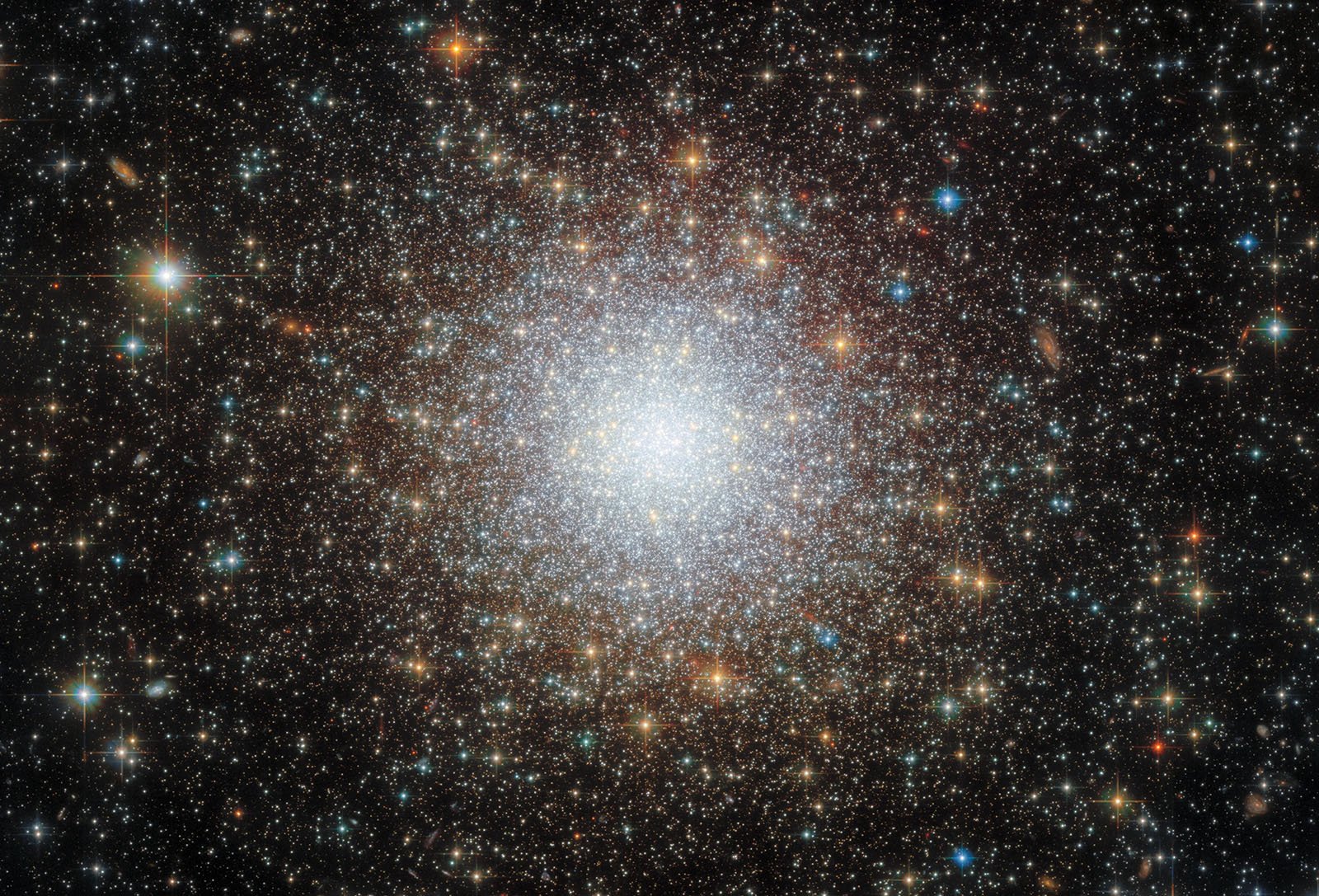
A striking new Hubble image shows NGC 2210, a marvelous globular cluster in the Large Magellanic Cloud (LMC). The ancient cluster is 11.6 billion years old and a satellite galaxy of the Milky Way, meaning that NGC 2210 is gravitationally bound to Earth’s galactic home.
Located about 157,000 light-years from Earth, NGC 2210 was first discovered by astronomer John Herschel in 1835. John’s father, William, was a famous astronomer who frequently worked alongside his younger sister, Caroline. She was the first woman ever to be a salaried scientist and the first British woman to occupy a position in government. Together, William and Caroline made many discoveries, including finding Uranus. William Herschel is credited for discovering 36 globular clusters.
William’s progeny, John, served as president of the Royal Astronomical Society for three separate terms and made numerous discoveries beyond NGC 2210, including NGC 7, NGC 10, NGC 25, and NGC 28.
More than 180 years later, physicist and astronomer Rachel Wagner-Kaiser and a group of fellow researchers determined that NGC 2210, plus five other globular clusters located in the spectacular LMC, were all roughly the same age as similar star clusters in the Milky Way, helping to determine that NGC 2210 is about 11.6 billion years old. The new Hubble image of NGC 2210 is the first time the venerable space telescope has investigated the cosmic object.
Other famous globular clusters include Messier 2, Terzan 12, NGC 6540, and NGC 6544. Despite continued and extensive study of globular clusters, their formation remains enigmatic.
While 11.6 billion years old is ancient and only a couple billion years younger than the Universe, NGC 2210 is the youngest globular cluster in Wagner-Kaiser’s 2017 research sample. Other globular clusters in the Large Magellanic Cloud are even older, with four clocking in at a staggering 13-plus billion years old.
The discovery and groundbreaking research helped astronomers determine that the oldest globular clusters in the LMC “formed contemporaneously with the oldest clusters in the Milky Way, even though the two galaxies formed independently,” NASA explains.
NGC 2210 is of significant scientific interest, but it is also beautiful. NASA also mentions what life might be like for hypothetical inhabitants who live on a planet orbiting one of the stars within the center of the globular cluster. “The sky would appear to be stuffed full of stars, in a stellar environment that is thousands of times more crowded than our own,” NASA explains.
That would be one heck of a view.
